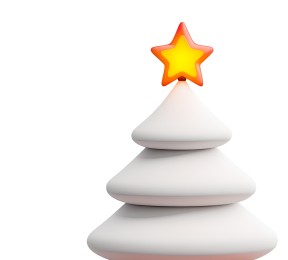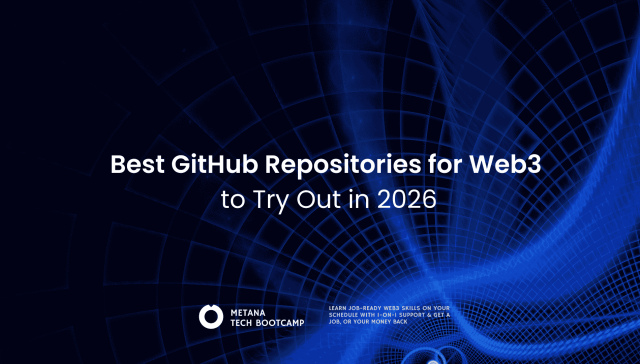Web3 is an exciting and closely-knit space filled with prospects, where users gain ownership and change ways of interacting online. If you have an outstanding concept to share and align with the increasing development in this area, then this guide is just for you. We will discuss some best practices on how you can launch a Web3 project successfully and create a community to support these projects and make them grow strong and steady.
The detailed approach laid out in these steps will make you ready to explore the challenging, but exhilarating world of Web3 development. It’s time to turn your idea into act, in creating a vision of tomorrow for the decentralized web.
Conceptualizing Your Web3 Project
Launching a successful Web3 project starts with a solid foundation – understanding the problem you’re solving and who you’re solving it for. This initial conceptualization phase sets the stage for everything that follows: building, launching, and growing your project.
Here’s a breakdown of the key steps:
1. Identifying the Problem and Target Audience:
- Finding the Gap: Web3 is a fast growing space, but there are still inefficiencies and limitations. Look for areas where existing systems are clunky, lack transparency, or fail to empower users. Perhaps it’s data ownership in the digital age, or cumbersome supply chains, or the need for more inclusive financial tools. Identify a specific pain point and ask yourself: “Can Web3 technologies like blockchain and cryptocurrencies offer a better solution?”
- Who Benefits? Once you’ve identified the problem, define your target audience. Who are the people or industries struggling with this issue? Understanding their needs, motivations, and technical literacy is crucial. Tailor your project’s features and user experience to resonate with them.
Here’s an example: Imagine you identify a lack of transparency in the music industry, where artists struggle to get fair compensation for their work. Your target audience could be musicians and their fans. Your project might be a blockchain-based platform that allows artists to directly connect with fans and distribute music, ensuring they receive a larger share of the profits.
2. Understanding the Web3 Landscape:
Web3 could be a bit complex with various components. Before exploring web3 let’s familiarize yourself with the key concepts:
- Blockchain Platforms: There are numerous blockchain platforms, each with its strengths and weaknesses. Explore popular options like Ethereum, Solana, or Cardano. Consider factors like scalability, security, and the availability of developer tools when choosing the platform that best fits your project’s needs.
- Tokenomics: Tokens are digital assets that can represent ownership, utility, or value within your project. Understanding tokenomics involves designing a sustainable model for token distribution, usage, and value creation within your ecosystem.
- DeFi (Decentralized Finance): DeFi refers to a suite of financial products and services built on blockchain technology. Explore DeFi concepts like lending, borrowing, and decentralized exchanges to understand how they might integrate with your project and offer additional value to your users.
Incorporating the knowledge of these concepts will help you prepare for the Web3 world and create a project that is desperately needed while being technologically grounded.
This could include idea generation meetings, preliminary studies on the target market, and studies on other companies in the business. The aim is to make the concept more polished and establish whether it is feasible, and create the foundation for launching a successful Web3 project.
Building the Foundation
Once you’ve conceptualized your Web3 project, it’s time to translate that vision into a functioning product. Here’s where the technical aspects come into play:
Choosing the Right Blockchain
A blockchain platform is the groundwork you will base your project on which is why it matters which one you will pick. It helps in defining factors such as security requirements, efficiency of transactions (scalability), and existing software tools.
Scalability is a Critical Factor because it determines the ability of the platform to support the expected user traffic and population density of trading activity while maintaining reasonable speed and cost-efficiency. It also has to be secure; the platform has to be resistant to hacking and any other form of insecurity that can be present nowadays.
Also, it is very important that there is a ready and active repository of apps, templates, SDKs, and tools which can be used in the project and its deployment. Technical community focused around the platform is also helpful as it offers timely deliverables and stimulates creativity. Ethereum, Solana, Polygon or Avalanche are a few examples of the platforms that people utilise while searching for one that will be perfect for a particular project.
Developing Secure Smart Contracts:
Smart contracts are self-executing code that runs on the blockchain. They automate tasks and govern the core functionalities of your project. Think of them as the engine that powers your Web3 application.
Developing secure smart contracts is crucial. Any bugs or vulnerabilities could lead to financial losses or unintended consequences for your users. Here’s how to ensure security:
- Utilize experienced developers: Hire developers with a proven track record in smart contract development and security best practices.
- Thorough testing: Implement rigorous testing procedures to identify and fix any potential issues before deployment.
- Smart contract audits: Engage security experts to conduct independent audits of your smart contracts to identify and address vulnerabilities.
Building a Minimum Viable Product (MVP)
When it comes to creating a new product and developing an application, one of the most effective strategies in modern product development is the Minimum Viable Product (MVP).
MVP stands for Minimum Viable Product that is the subset of required functions necessary to create a prototype and obtain feedback from consumers. When people develop MVPs, they want to build a product that provides the necessary functionality so that they can attract test users. Of course, this approach has a number of advantages.
It brings flexibility into the development processes especially in relation to aspects such as prioritizing the features, which in turn leads to reduction of the time and amount of money it would have taken to develop those features. Still, they cannot be underestimated because this feedback gives extremely important information collected in the real world as well as used for further iterations of the project before its full-scale.
Furthermore, a functional MVP is loved and helps to create discourse around the product. When launching your Web3 project, you should first start with an MVP that does nothing more than prove the basic idea but also gives you feedback from users on what they need. Also, you can take it a step further with immersive sandbox demo and let your users experience the project even more.
Building and Engaging Your Community
Web3 projects thrive on passionate communities. Here’s how to cultivate yours:
- Craft a Compelling Narrative: Explain your project’s “why” in a clear, concise way. What problem does it solve? What value does it offer? A strong narrative inspires users to believe and invest in your vision.
- Engage Your Audience: Utilize online forums, social media, and events to connect with potential users and developers. Foster active participation by encouraging discussions and addressing concerns.
- Empower Developers: Attract talent by considering open-source development, providing clear documentation, and hosting hackathons. A strong developer ecosystem fuels innovation and expands your project’s capabilities.
By focusing on these core aspects, you can build a thriving community that propels your Web3 project forward.
Launching and Growing
Launching your Web3 project is just the beginning. Ensuring long-term success requires strategic planning in key areas.
Securing adequate funding is crucial. Explore options like token sales or venture capital funding, each with its own regulations and benefits. Choose the best fit for your project to ensure smooth and compliant fundraising.
Effective marketing and PR are vital for generating excitement. Develop a strategy that includes online advertising, social media campaigns, and press releases to reach your target audience. Engage with your community on platforms like Twitter, Discord, and Reddit to build a strong following.
Security is paramount in Web3. Implement robust measures to protect user funds and data, including regular audits and secure coding practices. Educate users on best practices to build trust and ensure long-term viability.
By focusing on these areas, you’ll position your Web3 project for success, attracting users and establishing a strong presence in the Web3 ecosystem.
Conclusion
Launching a Web3 project is an enriching journey that requires careful planning, technical expertise, and a commitment to fostering a passionate community.
Begin with thorough research, develop a clear vision, gather a skilled team, choose the right blockchain platform, and create a detailed roadmap for your project’s development and launch a web3 project.
By following the strategies outlined in this guide, you’ll gain the knowledge and tools necessary to launch a Web3 project successfully. Remember, the success of your Web3 project hinges on solving a real need, building trust through robust security, and continuously adapting to the ever-evolving Web3 ecosystem. So, dive in, embrace the challenge, and get ready to make your mark on the decentralized future!
FAQs
What is Web3 and why is it important?
- Web3 represents the next generation of the internet, focusing on decentralization, blockchain technology, and user sovereignty, aiming to create a more open and transparent web.
How do I start a Web3 project?
- Begin with thorough research, develop a clear vision, gather a skilled team, choose the right blockchain platform, and create a detailed roadmap for your project’s development and launch.
What are the key components of a successful Web3 project?
- Essential components include a strong team, a clear use case, robust technology, security measures, community engagement, and strategic partnerships.
How can I build a community around my Web3 project?
- Engage with potential users on social media, forums, and other online platforms. Provide valuable content, participate in discussions, and offer incentives for early adopters and contributors.
What are common challenges in launching a Web3 project?
- Challenges include regulatory uncertainties, technical complexities, security risks, and building trust within the community and potential users.
How does blockchain technology support Web3 projects?
- Blockchain provides a decentralized and transparent infrastructure, ensuring data integrity, security, and trustless transactions, which are crucial for Web3 applications.
What funding options are available for Web3 projects?
- Funding options include venture capital, token sales (ICOs, STOs, IEOs), grants from blockchain foundations, and crowdfunding platforms.
What are decentralized applications (DApps)?
- DApps are applications that run on decentralized networks like blockchain, offering greater security, transparency, and user control compared to traditional apps.
How can I ensure the security of my Web3 project?
- Implement robust security practices, such as code audits, bug bounties, encryption, multi-factor authentication, and adhering to best practices for smart contract development.
What role do smart contracts play in Web3 projects?
- Smart contracts automate and enforce agreements without intermediaries, enabling trustless and transparent interactions and transactions within Web3 projects.








